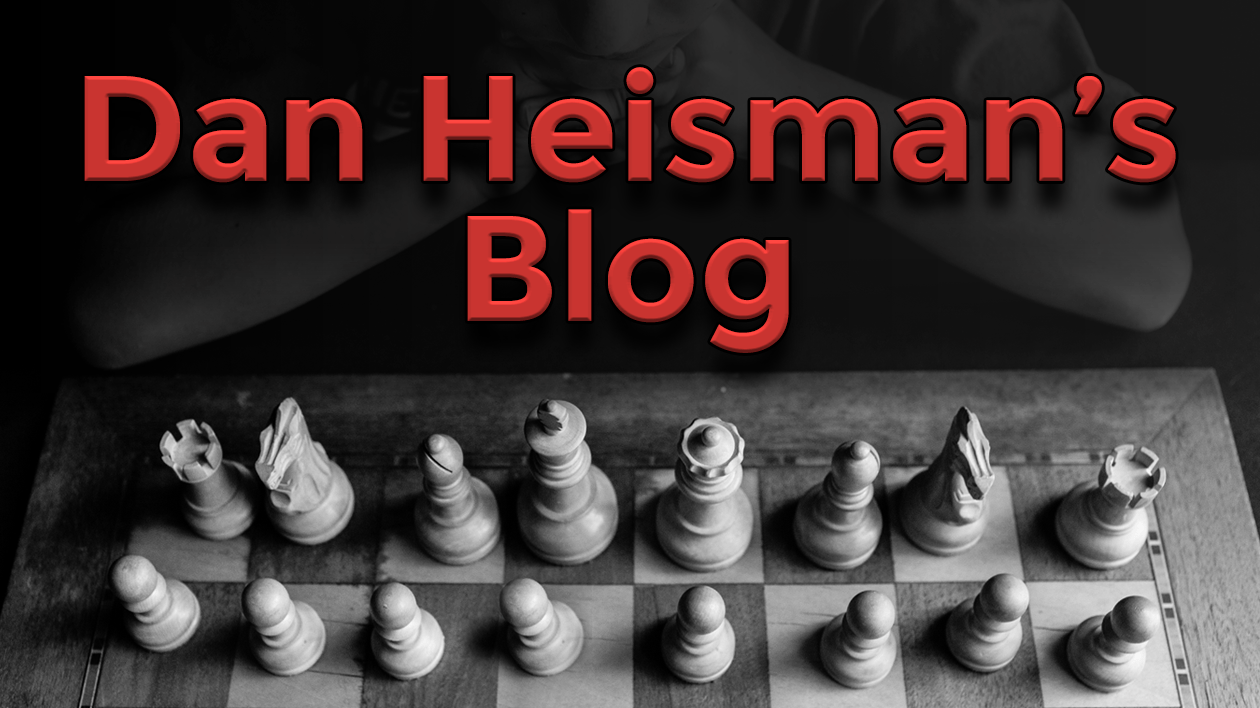There are many things for which you can "hope" when playing chess: for example, you can hope that your opponent doesn't see that your move was a blunder and fails to exploit it; you can hope that your opponent doesn't see your threat and will let you execute it next move, or you can hope that your opponent will make a mistake and give you an advantage.
But when I first wrote about "Hope Chess" about 20 years ago, I meant none of those ideas. I specifically meant "consistently making moves without analyzing the opponent's possible forcing replies (checks, captures, and threats) and thus, if he makes one, hoping you have a safe answer next move."
In other words, when your opponent makes a check, capture, or threat, you did not already confirm on the previous move that there would be a safe answer and instead think "Uh-oh! What do I do now?"
Obviously, strong players don't play Hope Chess or almost anyone would be able to beat them just by making a threat that he can't meet (unstoppable threats are often easy to generate when one is careless). Instead, good players consistently take their time to try to ensure that their opponents won't be able to make an unstoppable threat on their next move.
However, through teaching full-time over the past 22 years, I have come to realize that there are really two types of Hope Chess.
There's the kind where you make almost no attempt to see what the opponent can do next move, and then there's the more insidious kind that players in the 1200-1700 range do, which is to only use their tactical vision to check for danger. Using tactical vision is simply not sufficient, which I addressed in my earlier blog "Checking for (your move's) safety requires more than tactical vision".
In this article, I would like to go further by naming these two types of Hope Chess and giving examples:
- Basic Hope Chess - This is the type that advanced beginners and some lower intermediates play. They make moves and make no attempt to see if their move is safe. This means that pretty much any opponent's reply is not considered, with the possible exception of some really basic tactical shots. (I should differentiate Basic Hope Chess from the even more primitive "Flip Coin Chess" practiced by raw beginners. In Flip Coin Chess players don't even pay much attention to their opponent's moves, and often miss easy threats. However, in Basic Hope Chess a player often recognizes and attempts to meet at least one threat from the opponent's previous move [if there are some], but make little or no attempt to see if their candidate move is safe by trying to anticipate the opponent's dangerous replies NEXT move)
- Passive Hope Chess - This is the type usually found in players rated 1200-1700. They often think they are checking their move for safety, but what they are only doing is using their tactical vision to see if that identifies any possible danger should they make their anticipated move. It's Passive because they don't carefully analyze a candidate move for safety (even easy ones); instead they visualize their candidate move and just look for patterns they recognize based on their previous tactical study.
Basic Hope Chess
Here is an example of Basic Hope Chess (Black to play; click the "right arrow" below the diagram to see the moves):
In this position my student, playing Black, made the move 4...Nb4. When I asked him why he made that move, his answer was "I wanted to threaten the fork on c2." This is basic and blatant Hope Chess, not because White can easily answer the threat with a move like 5.Na3 (which my student did not consider), but because White can do even better with his only check 5.Qa4+ forking the knight and the king and winning a piece. My student admittedly made no effort to see if his move was safe; he was only concerned with "offense" and, as a result, made an easily defended threat which also lost material.
If you wish to become a good player, you have to assume your opponent's will try to make their best moves. If you are in the habit of making "silly" threats that are not only easily met but, in doing so, harm your position just on the hope your opponents will miss the threat, that's a bad habit. Likely you will have to break that habit to get to the next level.
The following example is the most incredible Hope Chess example I have encountered (White to play):
Here White should try to win both pawns with the sequence 1.Qf3+ Kg1 (1...Ke1 2.Qe2#) 2.Qf2+ Kh1 3.Qxh4+Kg1 (3...Kg2 4.Qf2+ Kh3 5.Qf3+ Kh2 [or 5...Qg3 6.Qxg3+] 6.Qxc6 transposes to the main line) 4.Qf2+ Kh1 5.Qf3+ Kh2 (5...Qg2 6.Qxg2+ Kxg2 7.Ke4 is hopeless for Black) 6.Qxc6 with a tablebase "plus".
Instead White played the amazing 1.Qh1+?? forcing Black to beat him with the only legal move 1...Qg1+, which in turn forces the losing endgame 2.Qxg1 Kxg1 3.Kf3 h3 and White resigned. Thus White's first move not only lost to a forcing reply (check, capture, or threat), but it gave the opponent no choice! Obviously if White had analyzed what must happen after 1.Qh1+ he would not have played it: he could not have considered the consequences or he would have seen that he was absolutely forcing his opponent to win, like it or not! It's the rare case where the "hope" became a promise of doom. I guess one could argue it's one of the worst moves ever made - how often can you force your opponent to beat you in a real game? Even if you put your queen en prise or allow mate in one, your opponent almost always has the option to miss it!
Passive Hope Chess
In a sense Passive Hope Chess, although more "advanced" than Basic Hope Chess, is more insidious because the perpetrators think they are checking to see if their moves are safe. When they subsequently make unsafe moves which lose material via easy tactics by their opponents, they wonder why and, unless their thought process is analyzed, may continue to make this debilitating mistake ad nauseum. It wasn't until I tested hundreds of students in the 1200-1700 range that I discovered that many, if not most, of these students thought they were checking to see if their moves were safe even as they made unsafe moves. This apparent contradiction was solved when I realized they were only using their tactical vision to "peruse" for safety; if everything "looked" safe after their candidate move, they concluded it was.
The problem, of course, is that using your tactical vision to check if your move is safe is only part of determining if a move is safe. If you visualize correctly and spot a pattern that you studied that indicates the move was not safe, then that's good. The problem is that this step is helpful and arguably necessary, but its clearly not sufficient. There are many easy tactics that either you may not have studied (and thus won't recognize) or, more commonly, are not often found in "easy" tactics books. The following is an example. White to play. Is 1.Nc3 safe? (diagram corrected. White king should be on g2)
I have given this puzzle to hundreds of students. The majority of students in the 1200-1700 range, after taking their time to consider the question, conclude that 1.Nc3 is safe. They may not like the doubled pawns after 1...Nxc3 2.bxc3 (which are actually not a problem, but that's another story), but give the "final answer" that 1.Nc3 is safe.
Yet Black has the straightforward answer 1...Nb4, with a discovered attack on the d-pawn and a direct attack on the c-pawn. This double threat cannot be met, so White must lose a pawn and therefore 1.Nc3 is not safe. This tactic is fairly simple, but because it "only" wins a pawn, a similar tactic would rarely be put in a basic tactics book - pawn winning tactics, although common, rarely outsell rare queen sacrifices. The fact that such problems are relatively uncommon is important, as few players would "recognize" that 1.Nc3 is unsafe just from quickly scanning the board and looking for danger.
A good player learns to automatically analyze candidate moves for safety. One of my students, on my suggestion, showed this position to IM John Donaldson but instead of asking the IM if 1.Nc3 was safe, he simply said "What do you think of 1.Nc3?" Not surprisingly, within a second on two John answered something like "Well, what would you do about a move like 1...Nb4? So I don't think 1.Nc3 is a good move."
I would bet IM Donaldson found this move not just from pattern recognition, but by quickly analyzing the possible dangerous moves for Black, starting with all the knight discoveries. By doing so, he quickly found that 1...Nb4 attacked both pawns and that White could not save both.
What I learned from giving this problem to so many students is that even if they know to look to see if a move is safe, they don't carefully analyze the possibilities; it's much more likely they "scan" for trouble. This is therefore the hallmark of Passive Hope Chess: they "look" for danger but don't actually analyze. So even a relatively short and easy tactic like 1...Nb4 is difficult to find if it's not a common pattern and you are not looking systematically at the opponent's possible dangerous moves (like the discovery in this example; a tactic will always start with a check, capture, or threat, although some "threats" are subtle).
Hopefully these examples will suffice to differentiate these two types of Hope Chess. As I wrote in my original article "The Secrets of Real Chess" almost 20 years ago, playing Real Chess (when you DO consistently analyze to see if each candidate move is safe) will not make you a good player, but playing Hope Chess will prevent you from becoming one.







